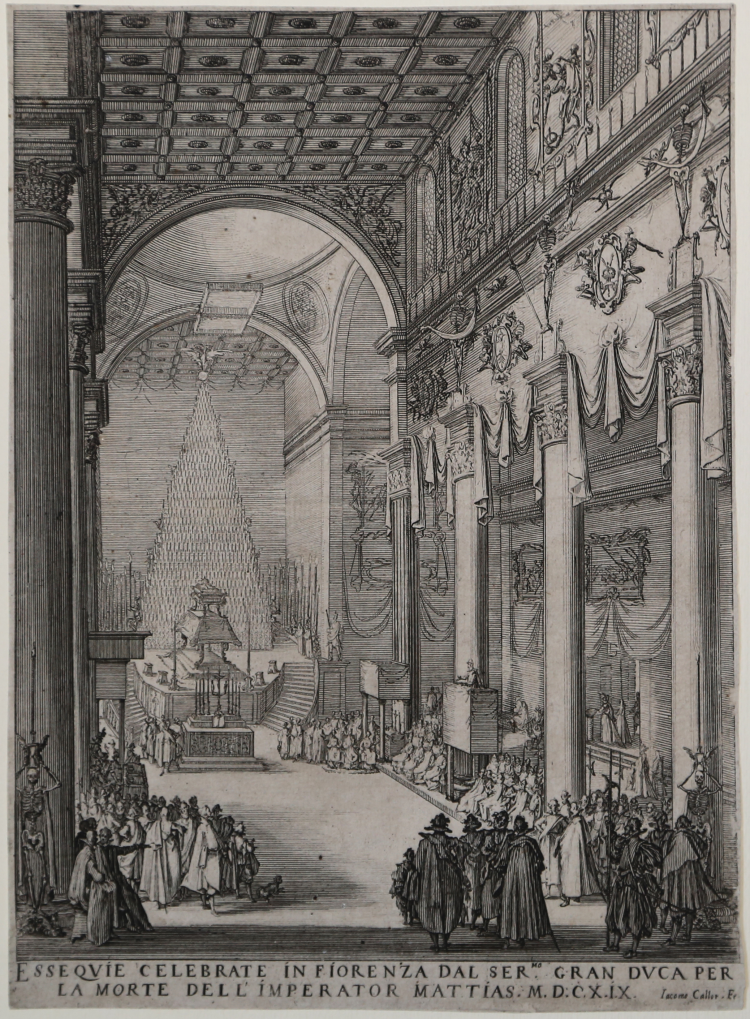




| Reference: | S5463 |
| Author | Jacques CALLOT |
| Year: | 1619 |
| Measures: | 200 x 280 mm |



| Reference: | S5463 |
| Author | Jacques CALLOT |
| Year: | 1619 |
| Measures: | 200 x 280 mm |
Funerals of emperor Matthias: interior of San Lorenzo's church in Florence, with columns on the side of the nave, and coffering on the ceiling; in the background, behind the altar, stands the catafalque of the late emperor.
Etching with engraving, 1619, signed at lower right.
After a subject by Giulio Parigi.
Second state of three. A fine impresson, printed on contemporary laid paper with "double C of Lorraine" (Lieure 29) watermark, trimmed to the borderline, in good condition.
Interior view of San Lorenzo in Florence with funerary decorations, catafalque behind altar, mourners standing in foreground.
Rare.
|
Lieure 299 secondo stato di tre; Meaume 1860 597.II; 'Jacques Callot' (Nancy, 1992), No.96-98.
|
Jacques CALLOT (Nancy 1592 - 1635)
|
He was a baroque graphics artist, draftsman and printmaker from the Duchy of Lorraine (an independant state on the North-Eastern border with France). He made etchings that chronicled the people and the life of his period (soldiers, clowns, drunkards, wanderers, beggars, and various outcasts). These images of people are often contrasted by spectacular landscapes (see, for instance, "The Temptation of St. Anthony"). His skill in shading and his use of different tones were remarkable for the period and he is often compared to Albrecht Dürer.
|
|
Lieure 299 secondo stato di tre; Meaume 1860 597.II; 'Jacques Callot' (Nancy, 1992), No.96-98.
|
Jacques CALLOT (Nancy 1592 - 1635)
|
He was a baroque graphics artist, draftsman and printmaker from the Duchy of Lorraine (an independant state on the North-Eastern border with France). He made etchings that chronicled the people and the life of his period (soldiers, clowns, drunkards, wanderers, beggars, and various outcasts). These images of people are often contrasted by spectacular landscapes (see, for instance, "The Temptation of St. Anthony"). His skill in shading and his use of different tones were remarkable for the period and he is often compared to Albrecht Dürer.
|